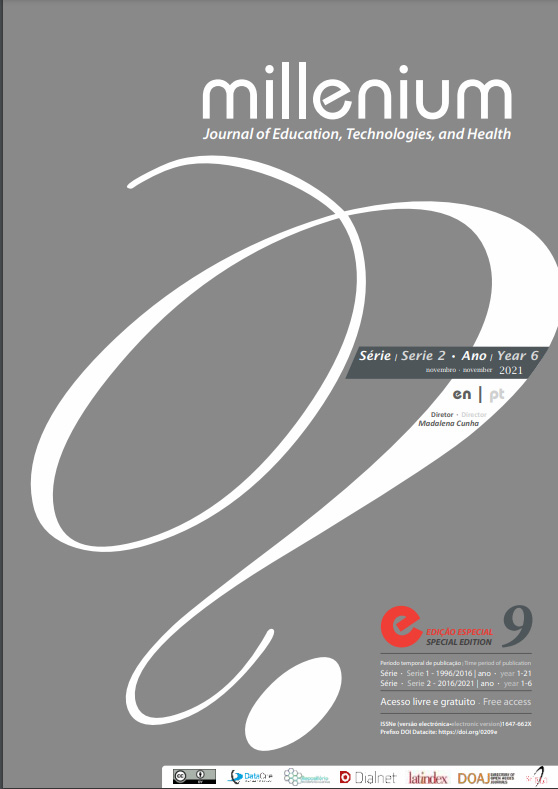Application of DMAIC methodology in a rubber component producing company
DOI:
https://doi.org/10.29352/mill029e.19188Keywords:
Lean, waste, DMAIC, 5'S, ayout, layoutAbstract
Introduction: Over the last few decades we have seen the great development of the industry, so companies get the final product to have better quality and an ever lower cost. Lean methodologies were increasingly implemented in the industrial and corporate core, breaking with the type of production that was practiced at the time, which was based on large volumes and little flexibility. Toyota managers and engineers began to develop procedures and tools to achieve lean, zero-waste, highly flexible production. Objective: The reorganization of the maintenance department layout, as well as the improvement of spare parts management process and the creation of flows for the repair of equipment and tools.
Methods: The tool used was DMAIC, it subdivides the problem solving process into five steps, such as: Define, Measure, Analyze, Improve, Control.
Results: With the application of this tool it was possible to reduce the number of trips and the distance traveled, thus the time required for its accomplishment also decreased. Spare parts are more organized, each workbench has the most consumable spare parts. The scores obtained in 5'S audits also increased compared to the results obtained before the intervention.
Conclusion: It was concluded that the root cause and defined solutions hat positive impact on the elimination of the cause and initial problem.
Downloads
References
Al-Aomar, R., Williams, EJ, & Ulgen, OM (2015). Process Simulation Using WITNESS. John Wiley & Sons.
Aruleswaran, A. (2010). Changing With Lean Six Sigma. Changing with Lean Six Sigma.
Brain Engineering. (2017). https://brain-engenharia.com/brain/3/155/six-sigma---origem-e-aplicacao.html
Montez, LFD (2011). «Six sigma»: A new corporate culture. (Masters dissertation). Lisbon Higher Institute of Engineering. Mechanical Engineering Department. Retrieved from https://core.ac.uk/reader/47130088
Pyzdek, T. (2000). The Six Sigma Revolution. Retrieved from http://www.pyzdek.com/six-sigma-revolution.htm
Rafinejad, D. (2007). Innovation, Product Development and Commercialization: Case Studies and Key Practices for Market Leadership. J. Ross Publishing. Retrieved from https://books.google.pt/books?id=dSATqILWWhwC&lpg=PP1&hl=pt-PT&pg=PP1#v=onepage&q&f=false
Rath & Strong. (2003). Rath & Strong's Six Sigma Leadership Handbook. John Wiley & Sons. Retrieved from https://books.google.pt/books?id=VSsHiZlPieAC&lpg=PP1&hl=en&pg=PP1#v=onepage&q&f=false
Santos, S. (Sd). How to do efficient brainstorming. Retrieved from https://pme.pt/como-fazer-brainstorming/
Singh, BK (2015). Wrap the scrap with DMAIC: Strategic deployment of Six Sigma in Indian Foundry SMEs. Anchor Academic Publishing. Retrieved from https://books.google.pt/books?id=tcHwCQAAQBAJ&lpg=PP1&hl=pt&PT=pgP##=onepage&q&f=false
Shankar, R. (2009). Process improvement using Six Sigma: A DMAIC guide. ASQ Quality Press.
Downloads
Published
How to Cite
Issue
Section
License
Copyright (c) 2020 Millenium - Journal of Education, Technologies, and Health

This work is licensed under a Creative Commons Attribution 4.0 International License.
Authors who submit proposals for this journal agree to the following terms:
a) Articles are published under the Licença Creative Commons (CC BY 4.0), in full open-access, without any cost or fees of any kind to the author or the reader;
b) The authors retain copyright and grant the journal right of first publication, allowing the free sharing of work, provided it is correctly attributed the authorship and initial publication in this journal;
c) The authors are permitted to take on additional contracts separately for non-exclusive distribution of the version of the work published in this journal (eg, post it to an institutional repository or as a book), with an acknowledgment of its initial publication in this journal;
d) Authors are permitted and encouraged to publish and distribute their work online (eg, in institutional repositories or on their website) as it can lead to productive exchanges, as well as increase the impact and citation of published work
Documents required for submission
Article template (Editable format)





